Offering discounts to your customers can be risky. If you run too many promotions, they may come to expect and wait for a sale before making a purchase. However, a well-planned sale can incentivize an undecided customer. 57% of shoppers are more likely to complete a first-time purchase if offered a deal.
In turn, strategic discounts can help grow customer loyalty and repeat business. One of the best ways to run a successful discount promotion is to think outside of the box to set your offer apart. Use humor, an unexpected approach or an incentive-based offer to engage your customers and turn your discount into something fun, rather than something they expect.
Curious about some out-of-the-box approaches you could use? Consider these examples from popular brands. Or, jump to the infographic for an in-depth look at the power of a discount.
Print Discounts
Kit Kat®: Surprise Your Audience
Customers are bombarded with marketing, so it’s helpful to find a way to cut through the noise and stand out.
Kit Kat did a great job of creating a direct mail marketing campaign that did just that. The direct mail design it created to introduce a new candy bar, Kit Kat Chunky, looked like an undelivered package notification. Since people rarely receive notices like this, it immediately drew attention, making the recipient want to know what kind of package they missed. For most ads, getting people to pay attention is the first challenge.
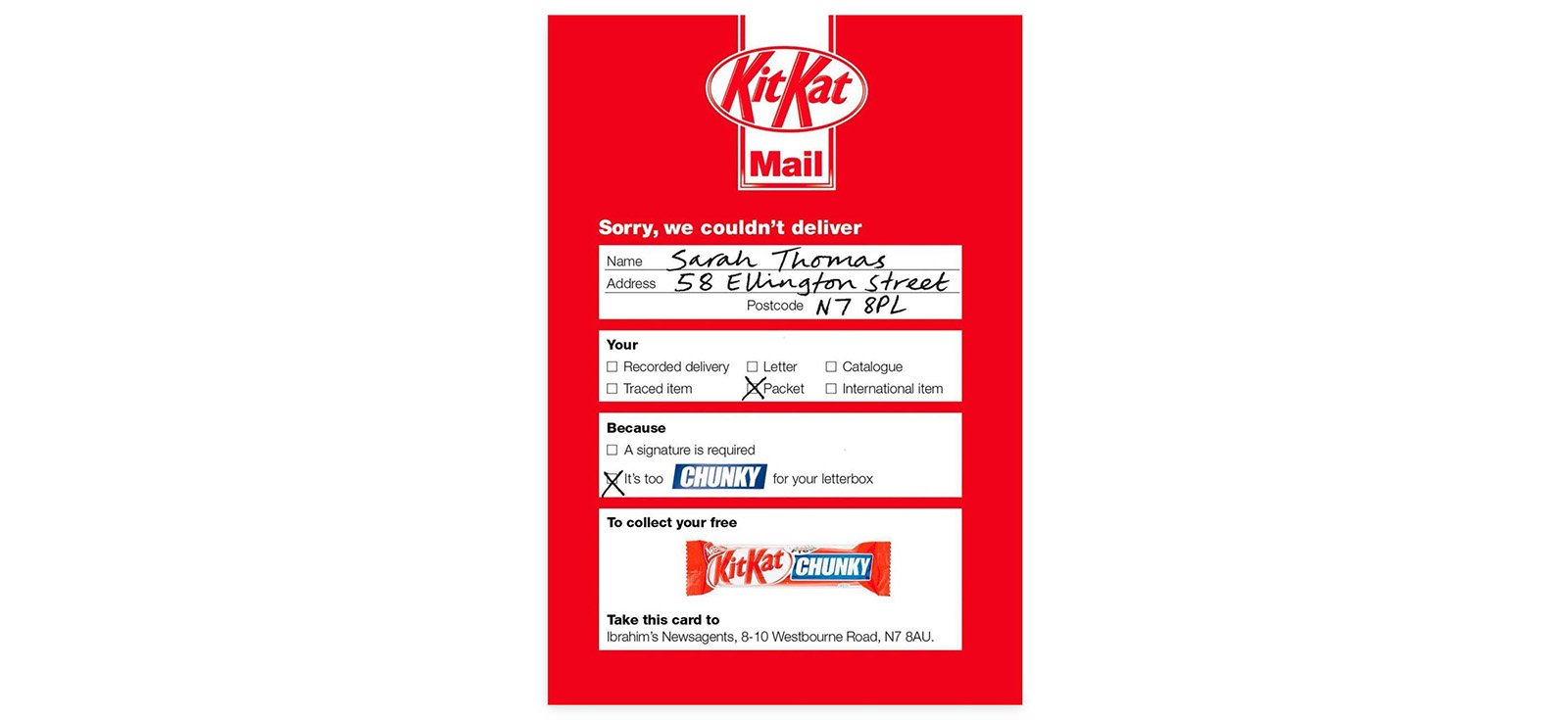
The ad also infuses humor in the “Because” section. Using the candy name (“Chunky”) is an amusing play on the common undeliverable cause of a package being too large. If you’re planning a direct mail campaign, think about how to make it stand out from other pieces of mail.
Lladró Lighting: Let Your Customers Interact
It’s not every day you come across an ad campaign that’s both functional and informative. Lladró showcased its range of chandeliers, lamps and sconces by creating interactive posters that converted to unique lampshades.
The print ads mimicked children’s pop-up books, enabling people to create their own lampshades by mounting the paper over a light in a corner.
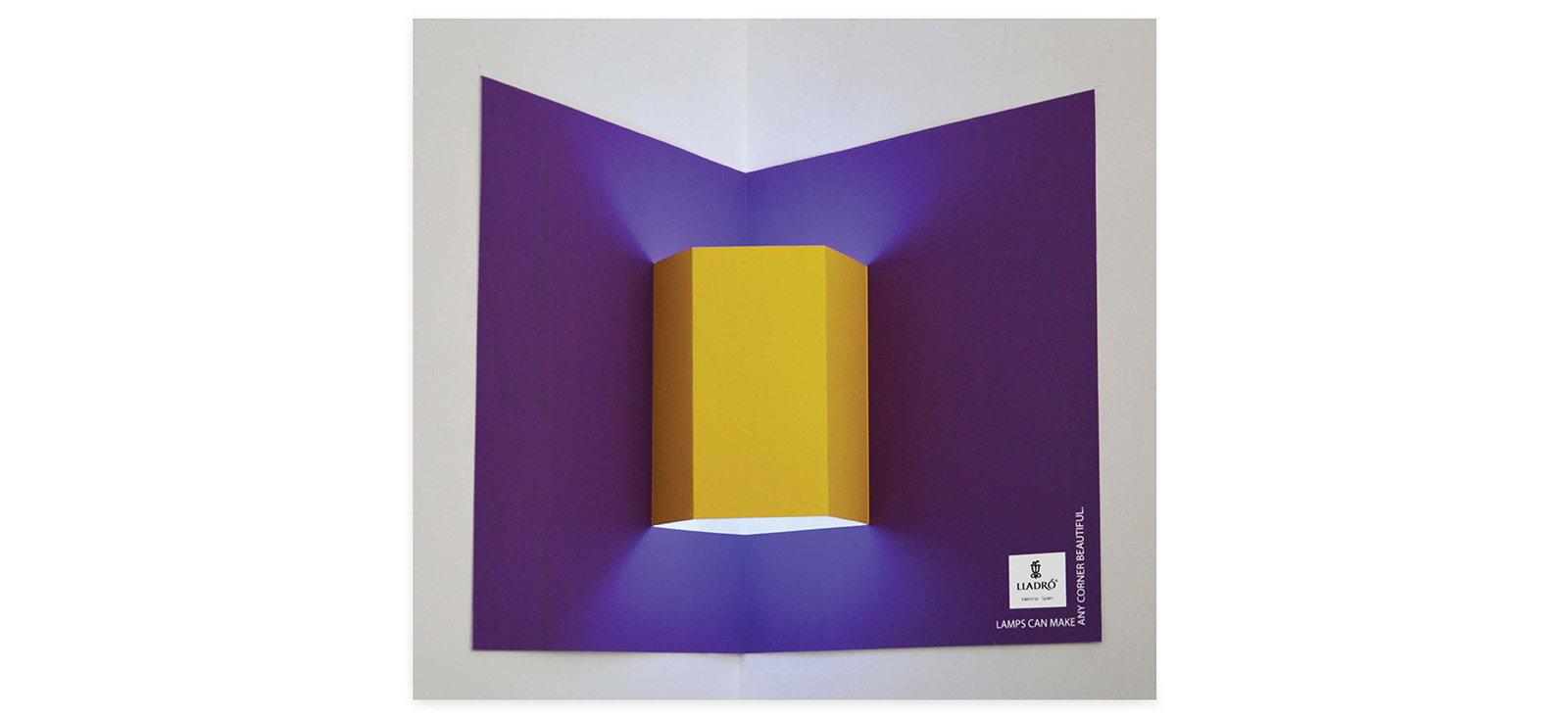
Direct mail campaigns don’t have to be flat — they can feature an element of fun as well. You could design the ad to be a scratch-off game where customers can win a discount or prize. Or, you could make a bingo board that can be filled in with every purchase for an opportunity to win a larger prize when the game is complete.
NatureBox: Combine Print with Digital
Online shopping makes collecting data on your customers’ viewing and buying habits incredibly accessible, so it’s easier to craft offers that they’re truly interested in.
But digital campaigns don’t have to live only online. You can combine a digital campaign with print marketing to leverage both sides. Take, for example, this mailer from NatureBox:
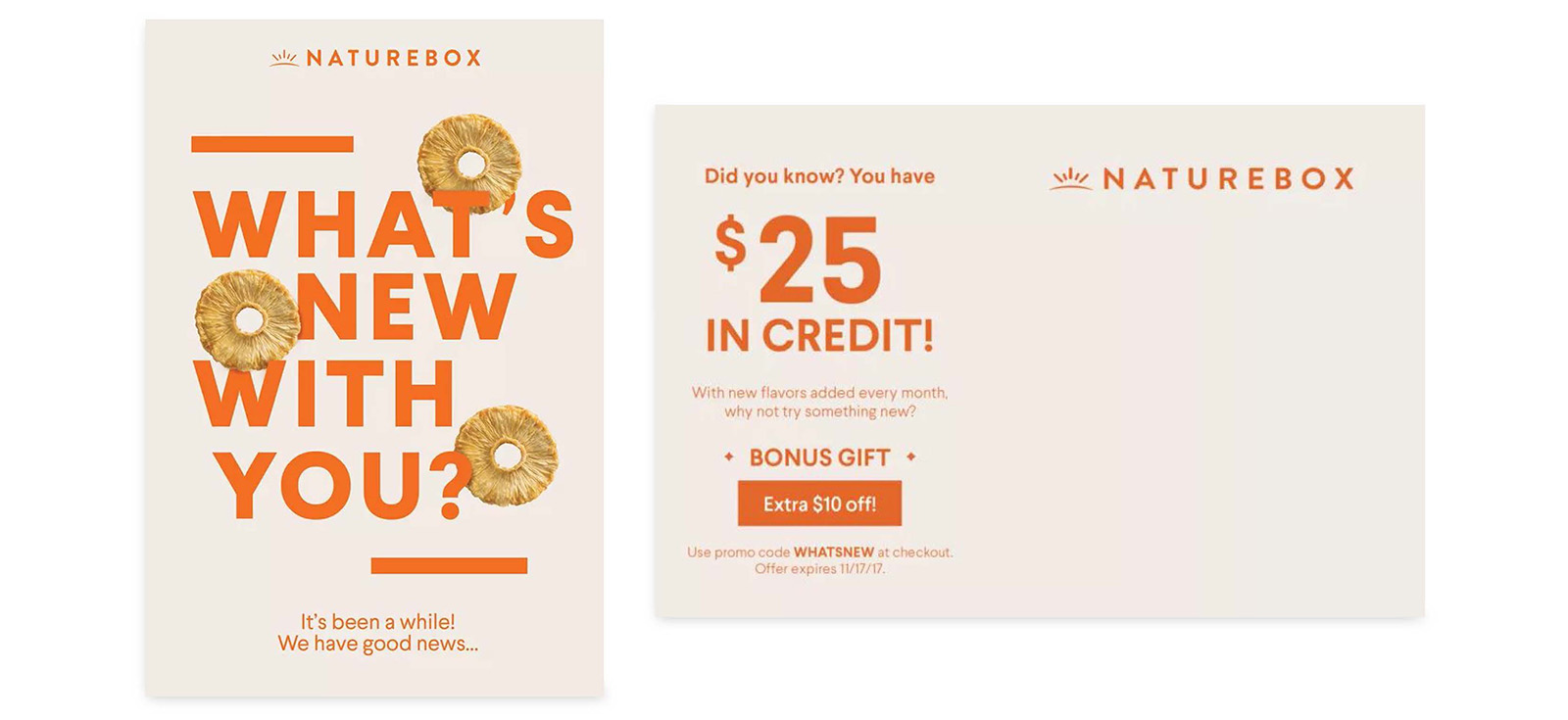
The mailer was only sent to lapsing customers who hadn’t ordered online in a while. NatureBox was able to use data it had collected from online purchases to develop a direct mail campaign designed to reach a specific subset of its customers.
This approach combined the benefits of print and digital marketing. By tying the offer to a promo code, NatureBox could attribute resulting sales directly to this campaign for a tangible, measurable ROI. And by getting something physical into customers’ hands, it bypassed increasingly cluttered email inboxes and spam filters.
Digital Discounts
Technology has opened up unlimited opportunities. From email campaigns to app-based loyalty programs, there are endless possibilities (if you have the budget and vision). That doesn’t mean digital promotions necessarily need to be expensive or complicated.
With the ubiquitous nature of technology, it would be a mistake to not think about integrating a digital component into your promotions. Consider these simple, yet effective, digital discount examples from brands we know and love.
Harry’s: Cut Through the Noise with Humor and Personality
Even a great discount offer can get lost when you’re bombarded with deals. How can you cut through the noise to be heard? Add some humor or personality to your promotional communications.
The online razor supplier Harry’s has a great way of infusing humor into its branding and marketing. Take this Valentine’s email offer as an example:

It combined several humorous elements, including the absurdity of its mascot (a wooly mammoth) needing to shave, a playful acknowledgement of that absurdity (“It’s only weird if you make it weird.”) and turning a Valentine’s Day trope on its head (“those three little words everyone wants to hear”).
Even though this ad didn’t use traditional advertising methods — like value propositions and use cases — the design helped it stand out from other email offers during a popular shopping holiday.
Amazon: Create Urgency Through Limited-Time Offers
One-day sales, promotions “while supplies last” and similar strategies create a sense of urgency. They encourage shoppers to buy now or risk losing an opportunity. It’s a phenomenon that even has its own name: FOMO, or “fear of missing out.”
While this approach isn’t new, digital capabilities offer new and more robust ways to create limited-time offers. One of the most well-known examples of this is Amazon’s Lightning Deals.
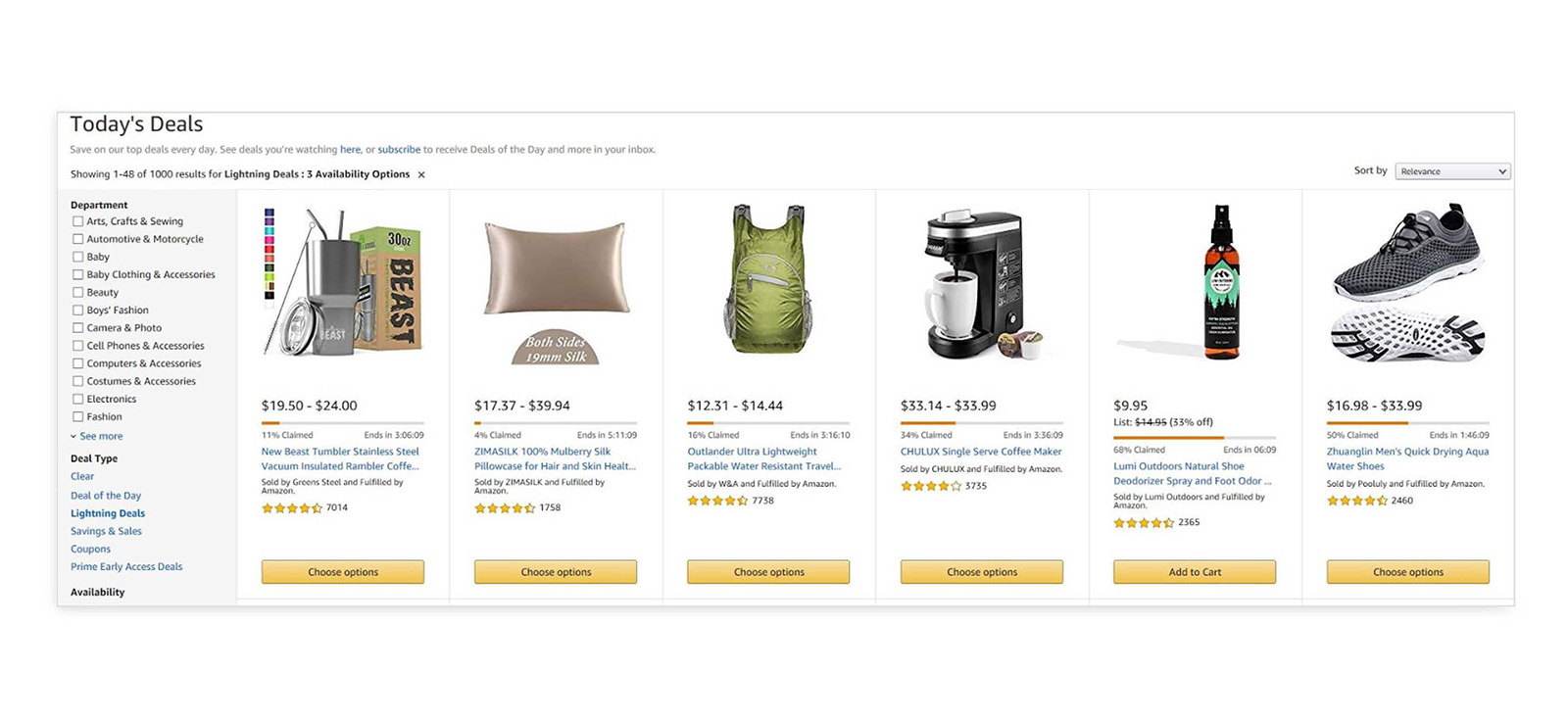 Amazon Lightning Deals work well because they create urgency by limiting both the quantity available and the length of time the offer is valid. They encourage impulse buys that make it less likely for a shopper to wait for a specific item to go on sale — you never know if or when a specific item could become a Lightning Deal.
Amazon Lightning Deals work well because they create urgency by limiting both the quantity available and the length of time the offer is valid. They encourage impulse buys that make it less likely for a shopper to wait for a specific item to go on sale — you never know if or when a specific item could become a Lightning Deal.
While emulating Amazon’s Lightning Deals might work well for a sizable online storefront, it can require a sizable investment in financials and labor to establish and run, making it challenging for smaller businesses.
Amazon’s approach is certainly not the only way to create urgency in digital marketing. There are plenty of smaller-scale solutions, such as adding countdown timers to emails or webpage pop-ups. The classic “One Day Only” sale can easily be brought online.
Dropbox: Reward Early Adopters and Encourage Referrals
For new businesses, it’s important to get up to a critical mass of users or customers to gain momentum and encourage word-of-mouth promotion. Many companies have found success offering discounts and rewards to customers who join early or bring their friends on board.
For example, Dropbox offers a free gigabyte of storage for every referral who joins.
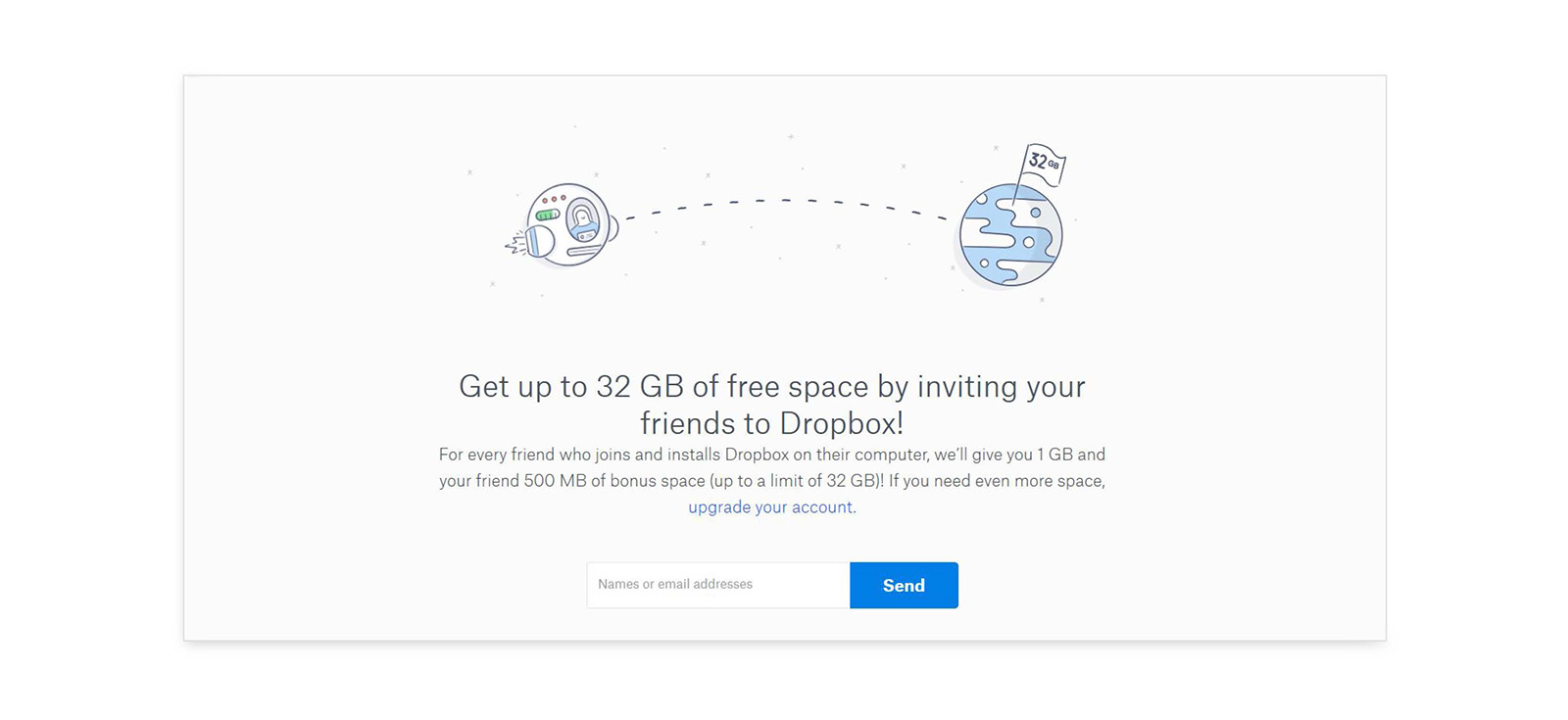
What makes Dropbox’s offer so powerful is that it doesn’t actually require any paying customers — even their free memberships are eligible. It enables someone to significantly expand what they can get for free by adding up to 32GB of additional space to the standard 2GB. And who doesn’t like free stuff?
Just because it’s free doesn’t mean Dropbox doesn’t get anything out of it. For every gigabyte it gives away, it gains a new user.
REI: Grow Customer Loyalty and Repeat Business
Customer loyalty is the holy grail for every business. New customers are great, but nothing will beat having customers return repeatedly.
A customer loyalty program often has different parts working together, including both digital and (for brick-and-mortar stores) in-store components. It doesn’t have to be solely digital, but having a strong digital foundation can help maximize your loyalty program.
While there are numerous great loyalty programs out there, one fantastic example is REI’s Co-Op Membership.
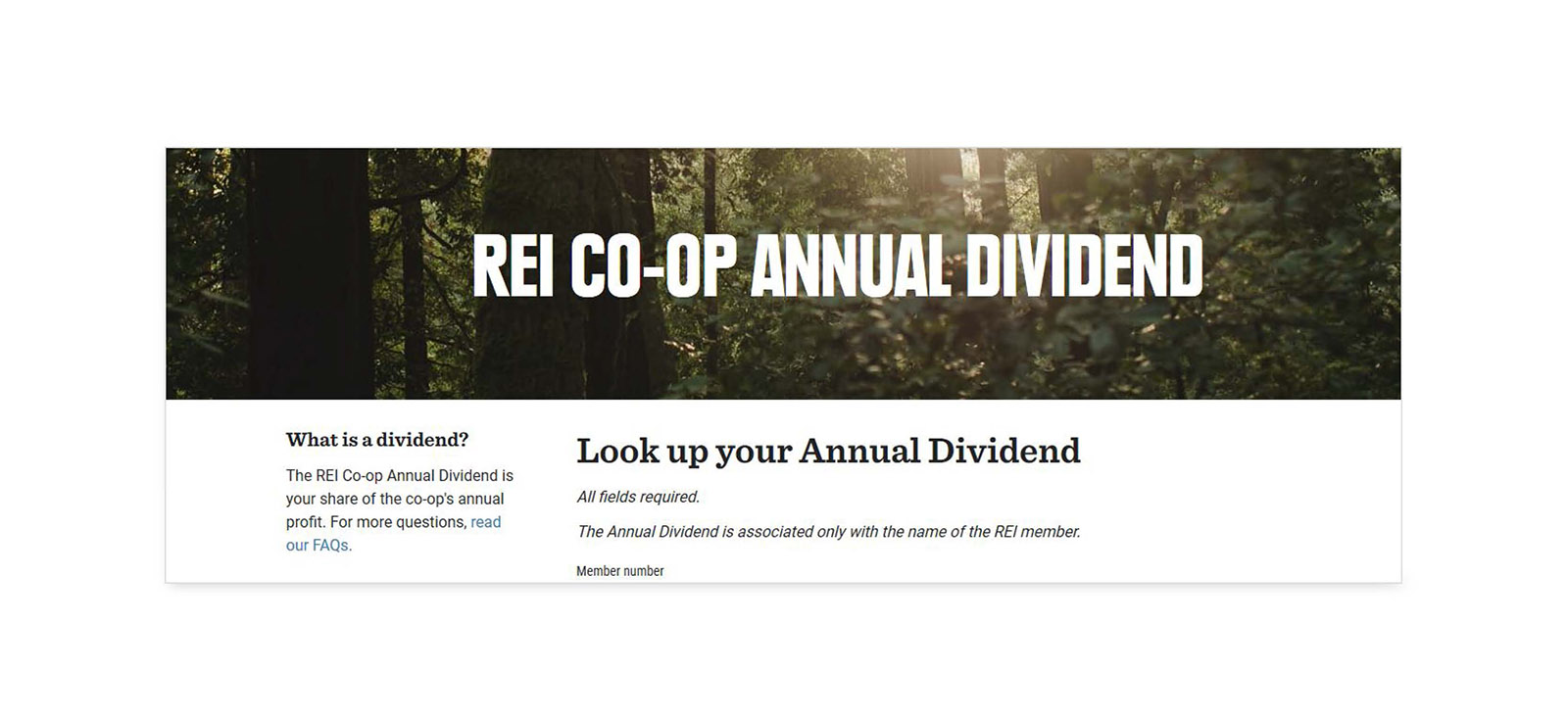
In addition to the discounts you can expect with any customer loyalty program, REI offers an Annual Dividend program.
The strength of the Dividend is that it incentivizes purchases. Members are encouraged to spend more in the beginning so they can get the most out of their dividends. Then, after they receive their dividends, it encourages them to return to purchase more.
Easyology Pets: Offer Something Free
When presented with a game, people love to participate and try to win. Businesses have picked up on this and started integrating ways to make shopping more fun.
Easyology Pets engages its customers through pop-up offers with a lucky wheel to spin for the chance to win a discount or free gift. This example works well because it encourages prospective customers to make a purchase, take advantage of what they won and prompts them to join the email list to participate.
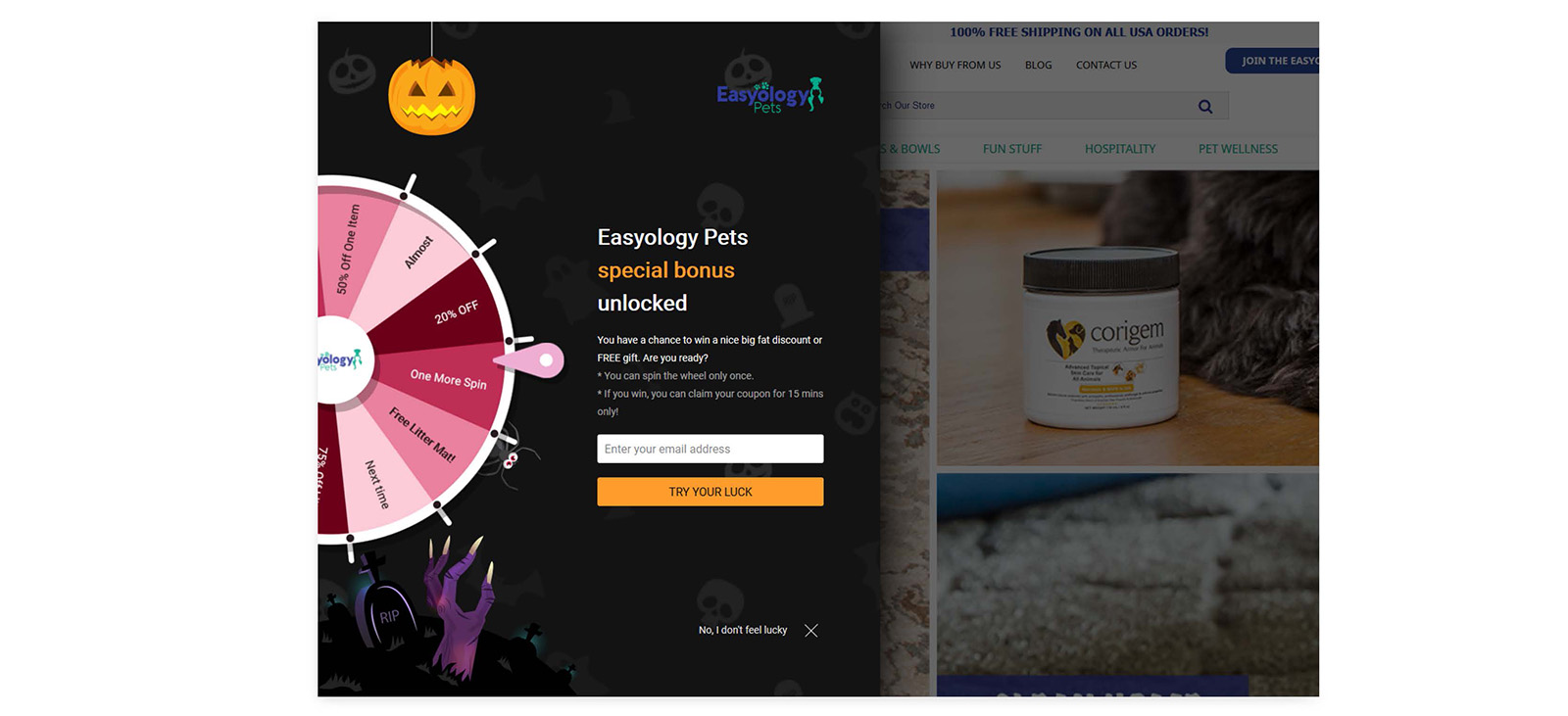
There are also other ways to gamify the process of making a purchase. For example, you can offer a bigger reward each time a customer spends money with your company.

[siege_media_share_infographic]
Share this Image On Your Site
If you’re running a discount promotion, find fun and creative ways to get your customers engaged. By offering an out-of-the-box print or digital discount, you’ll encourage your customers to make a purchase they maybe wouldn’t have otherwise.




